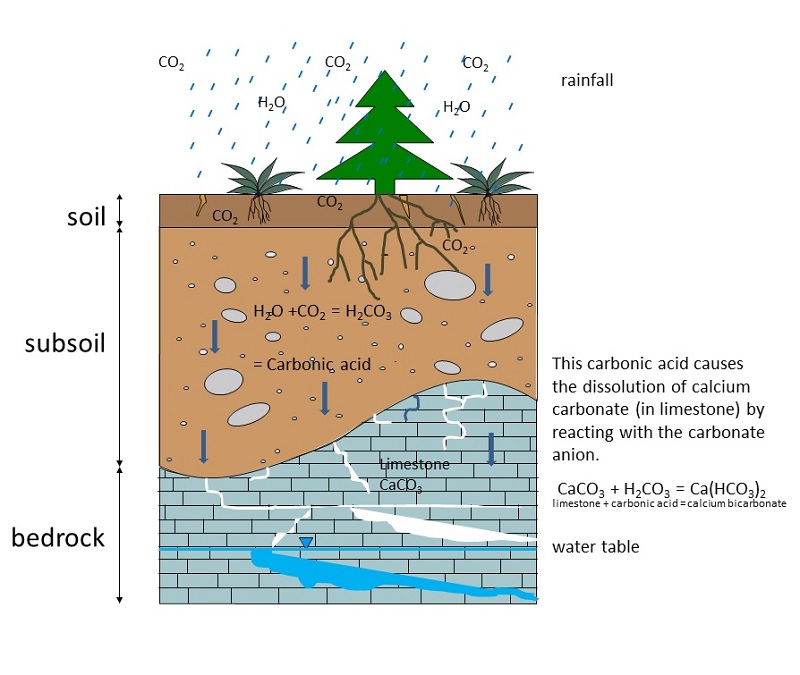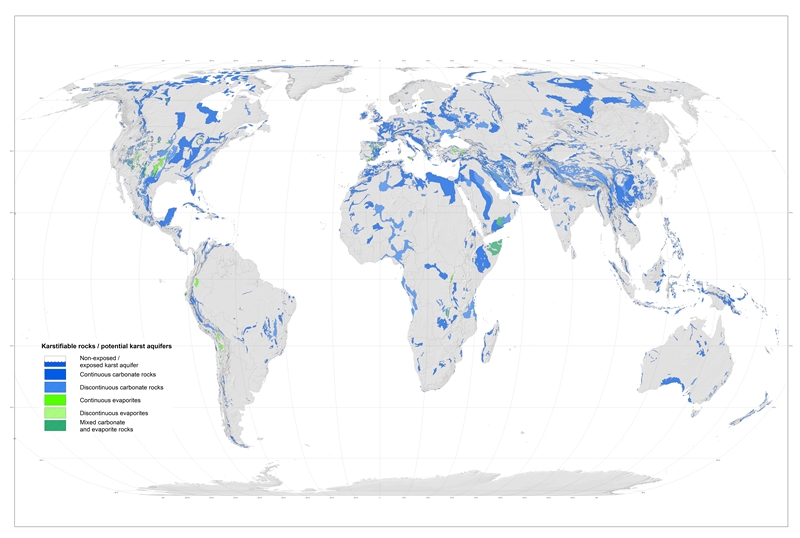What is karst?
Karst is a landscape with distinctive hydrology and landforms that arise when the underlying rock is soluble. Although karst can develop on evaporate rocks such as gypsum and siliceous rocks such as quartzite, the vast majority of karst landforms are found on carbonate rocks, such as limestones. Karst landscapes may have sinkholes, caves, enclosed depressions, disappearing streams, springs and sinkholes.

How does karst form and develop?
As rain falls through the atmosphere if picks up carbon dioxide (CO2). When this rain reaches the ground and passes through the soil it picks up more CO2 and forms a weak solution of carbonic acid. As the acidified rain water trickles down through cracks in the limestone, it begins to dissolve the rock. Over time it progressively enlarges the cracks and openings in the ground an underground drainage system starts to develop.

Karst landscapes around the world
About 13% of the world's land surface is characterised by karst.
 World distribution of karstifiable rocks (Chen et al, 2017)
World distribution of karstifiable rocks (Chen et al, 2017)
Source: Chen Z., Auler A., Bakalowicz M., Drew D., Griger F., Hartmann J., Jiang G., Moosdorf N., Richts A., Stevanovic Z., Veni G.,& Goldscheider N. 2017 The World Karst Aquifer Mapping Project – Concept, Mapping Procedure and Map of Europe. Hydrogeology Journal, 25, 771-785.
However, about 25% of the world's population live in these regions and depend on karst aquifers for its water supply. In some regions, such as Dinaric region in Europe and Southwest China, karst water contributes to more than 50% of water supply and other areas, such as Damascus in Syria with a population of more than 7 million, depend almost entirely on karst aquifers for water.